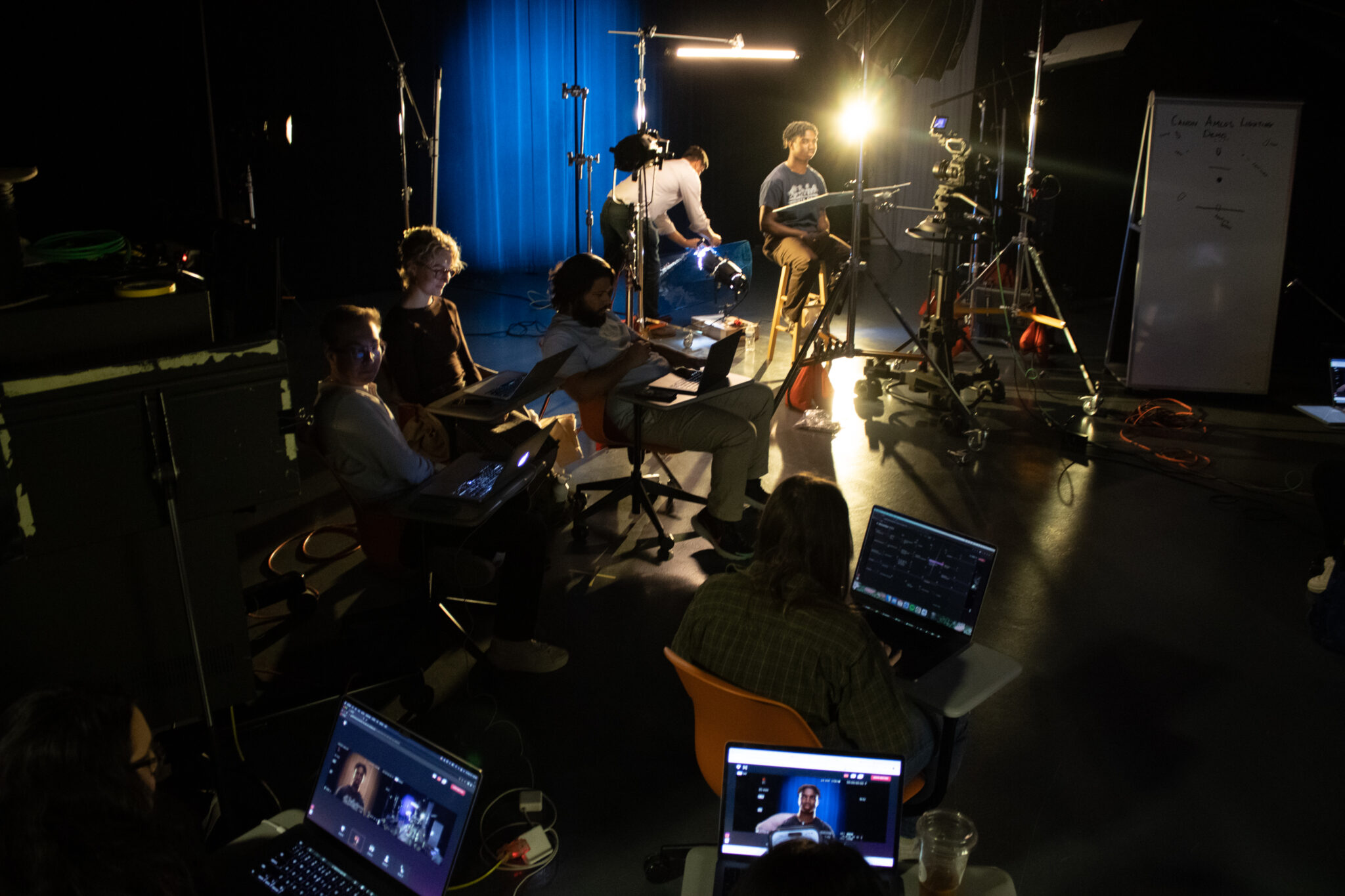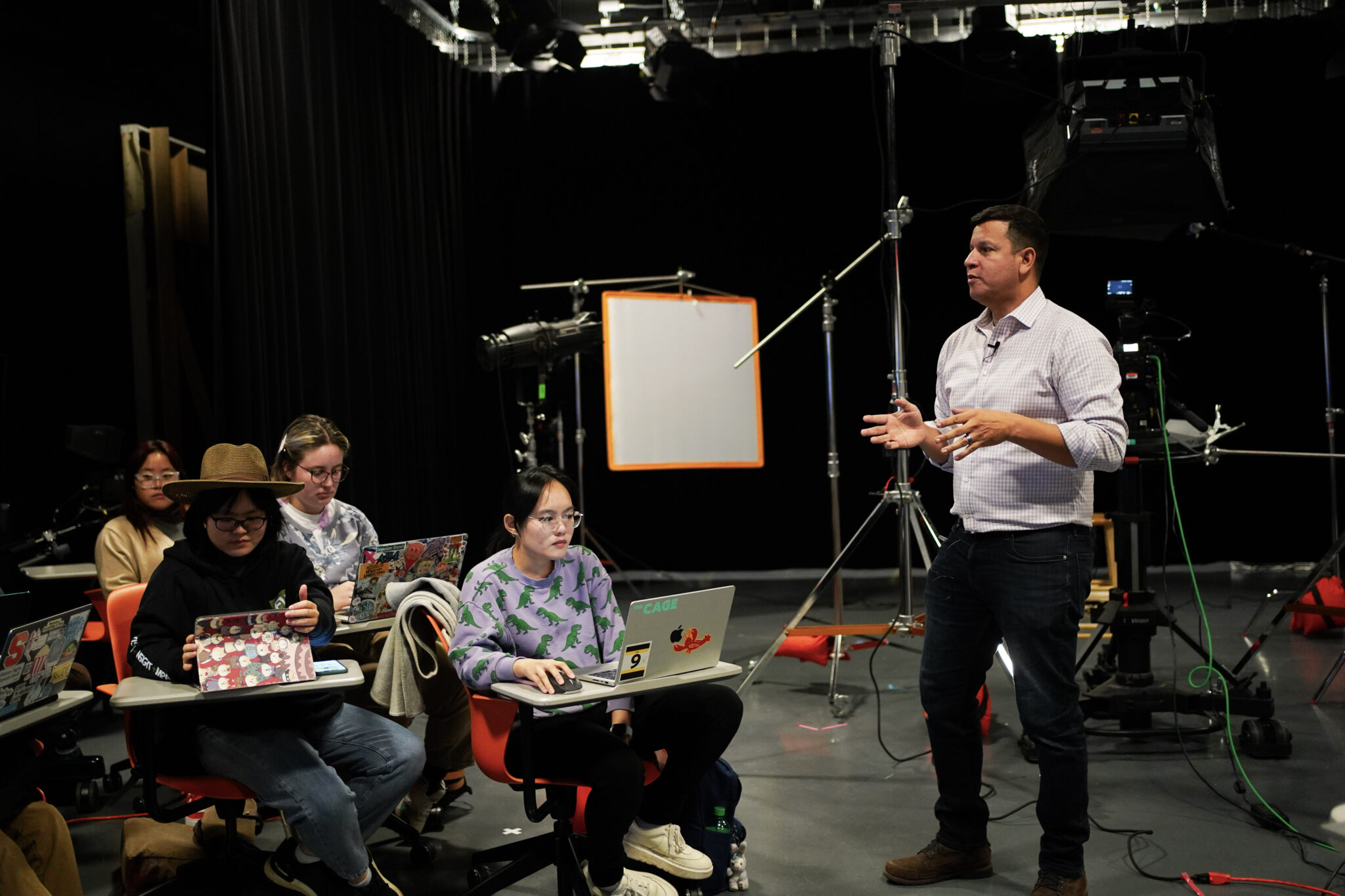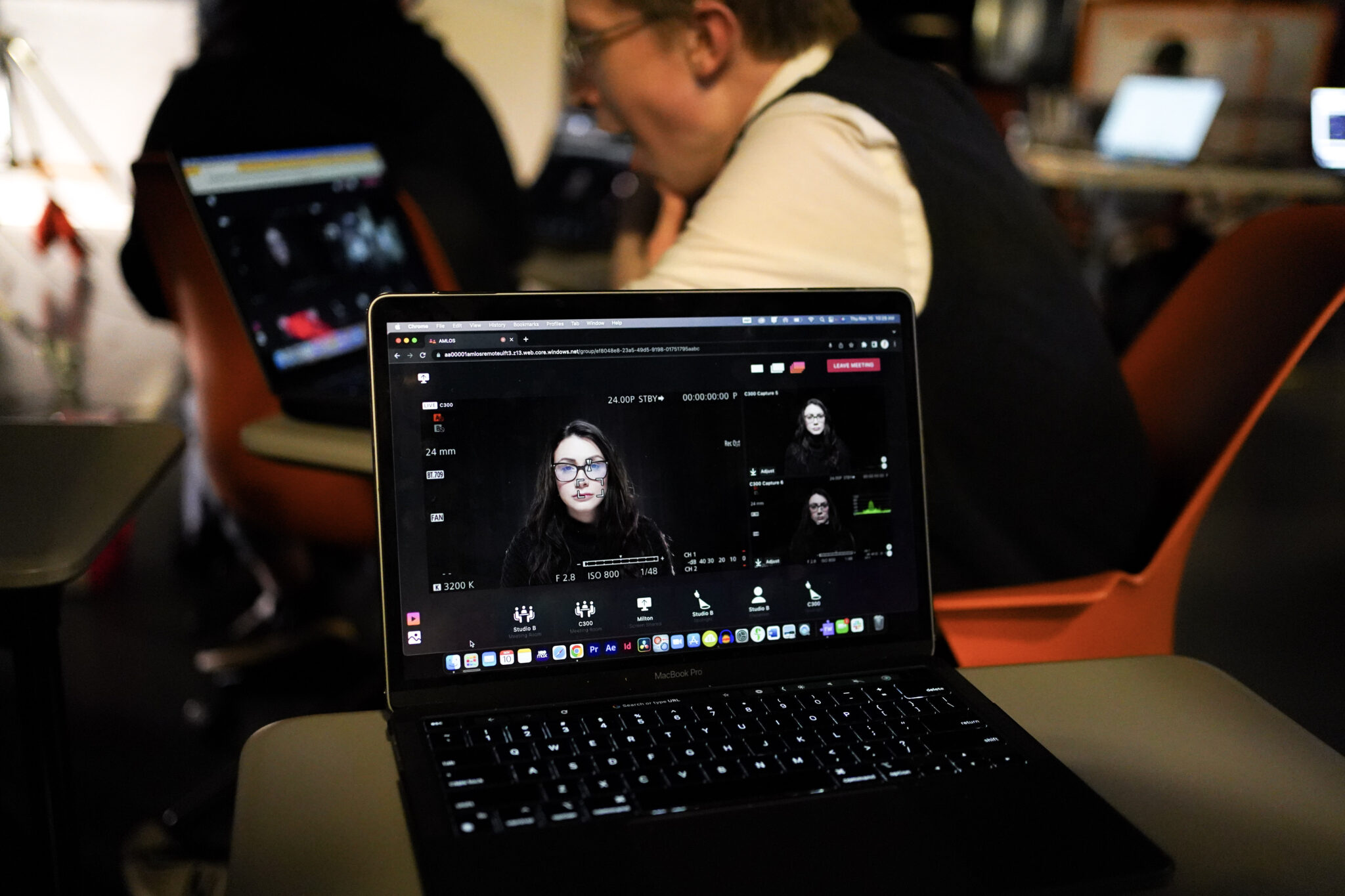In Sight: Newhouse Visual Communications Assistant Professor Works with Canon to Develop Camera Tech for Cinematography Class
Students in Milton Santiago’s cinematography class got an up-close look at cutting-edge technology.
They watched as Santiago, an assistant professor of visual communications, and engineers from Canon demonstrated a revolutionary camera-and-software tech called Activate My Line of Sight (AMLOS), which was fully customized just for the Newhouse class last fall.
Almost a year later, there is so much promise for the future.

AMLOS was originally designed to streamline hybrid meetings, making them more interactive and intimate by having a single camera filming multiple parts of a meeting room at the same time. This allows remote users to customize the interface and select their preferred views to see different people, objects and areas in an in-person meeting.
Santiago encountered the tech at the National Association of Broadcasters trade show in April 2022.
“I immediately thought: ‘What if I took this tech and brought it into the classroom?’” Santiago said in recounting his initial look at AMLOS.
Santiago had always wanted to show his cinematography students how different camera lenses work in real time. But, he said, “very rarely are you able to show the before and after, or the side by side, of what one person looks like with two different kinds of lenses locked in on them without the introduction of some post-production process.”
In the past, when demonstrating how lenses change the perspective or shape of an actor’s face, Santiago showed his students disparate images, one at a time, using one camera. That method required students to compare how different lenses changed how an actor’s face looked just by memory.

“It’s difficult for a trained eye to be able to see those nuanced differences, so it’s even harder for beginners or someone who doesn’t know what to look for,” he said.
He viewed AMLOS as the solution.
With “pan, tilt and zoom” camera functionality and facial and gesture recognition, the award-winning tech can display multiple live images side by side using only one camera. It was exactly what Santiago needed for his lensing lessons. Canon was willing to help and collaborated with him to make new coding adjustments in AMLOS’s interface, essentially tailoring the technology for the lessons.
A global debut
In November 2022, Newhouse students experienced the first, global academic use case of this customized AMLOS technology.
During the demonstration in the Newhouse School’s state-of-the-art Dick Clark Studios, students watched the powerful AMLOS camera as it filmed a fellow classmate who was seated in the front of the studio surrounded by lights and monitors. The single camera focused on a close-up of the student’s face, filming them with different lenses or lighting setups, and placed the images side by side on monitors. The student watching got an almost instantaneous view of the differences that resulted from these different lens focal lengths or shapes.

“Students very quickly were able to start making the associations between these nuanced optical changes and the lenses just based on being able to see things in real time,” Santiago said.
Visual communications senior Murphy McFarlane recalled how students were able compare the images and take screenshots of images on the monitors for reference in the future. For McFarlane, the AMLOS lesson felt different than others she experienced at Newhouse.
“It felt different for two main reasons: the AMLOS demonstration was innovative and collaborative. It was a really cool experience to be some of the first students to test the software with Canon,” she said. “In the end, the Canon reps asked for our feedback on how to improve and fine-tune the user experience, which made it clear that our input was important.”

Watching the demonstration remotely on a computer, 2023 photography graduate Xinning Li saw the same nuances as students in the classroom.
“Using technology to achieve a higher level of creativity, AMLOS fulfills the purpose of assisting students and fueling their passion for filmmaking,” Li said. “It’s about the tools, and it’s also about how we use them and what we use them for.”
More than just a lens
Students in Santiago’s class have an advocate for their education and future in the film industry. Santiago said he is “always looking for ways to use technology to accelerate the growth curve of a student cinematographer. … How can we use this plethora of amazing new technologies to still teach traditional visual storytelling but give students a leg up?”

He had Canon engineers train instructional assistant Collin Bell and research assistant Jason Lozada on the AMLOS tech, allowing the multimedia, photography and design graduate students to teach a class on their own using AMLOS and develop those skills.
“The biggest thing I will take into my future career from the AMLOS training is the ability to solve problems with new technology,” Bell said. “We were basically using technology that I had never seen before. There was a learning curve for sure, but it was also fun to solve the problems that AMLOS had to offer.”
Students in the class walked away from this demonstration with a better understanding of cinematic storytelling and how lighting and differently shaped lenses bring about “little nuanced changes” in a character onscreen.


For McFarlane, the experience was unforgettable.
“Overall, I think the whole demo was a very unique experience. It was really exciting to be a part of something so innovative,” she said.
Santiago and Canon continue to look at ways to customize the AMLOS software for more interactive learning experiences, even hoping to partner with international universities and collaborate with students on creative projects.
“There’s still a lot of room to explore,” Santiago said. “It’s just like experimenting and seeing what other kind of ground we can break with the tech.”